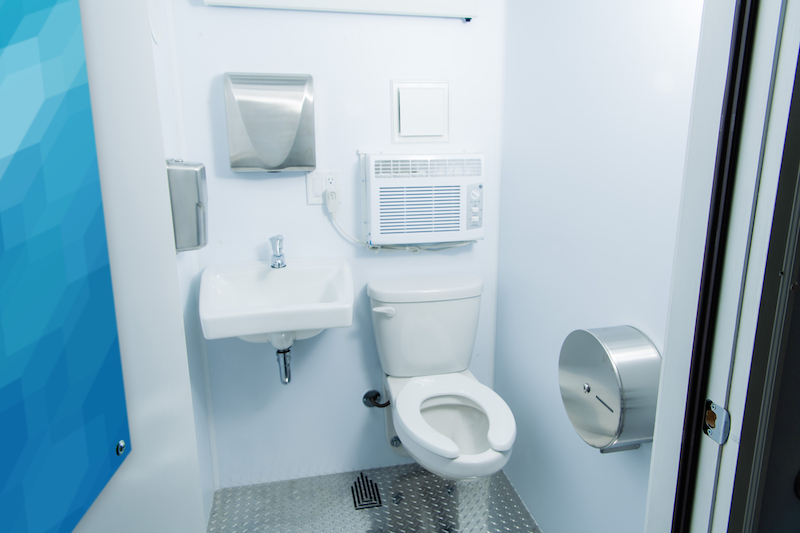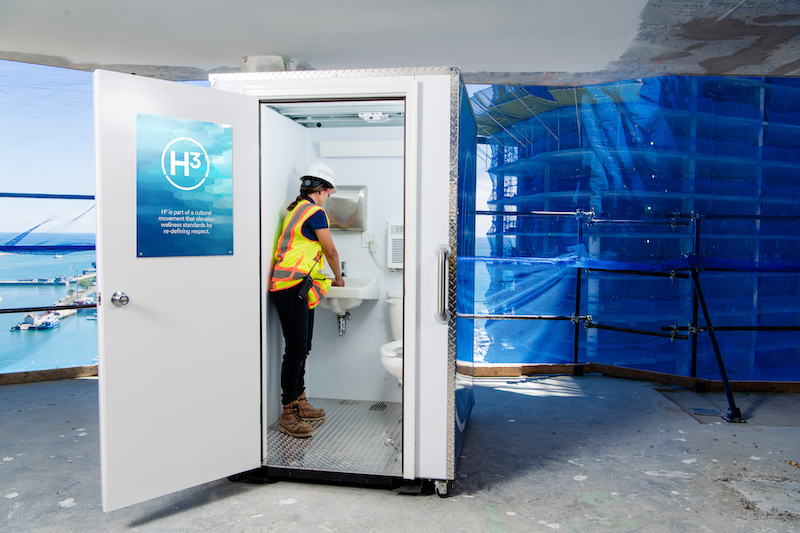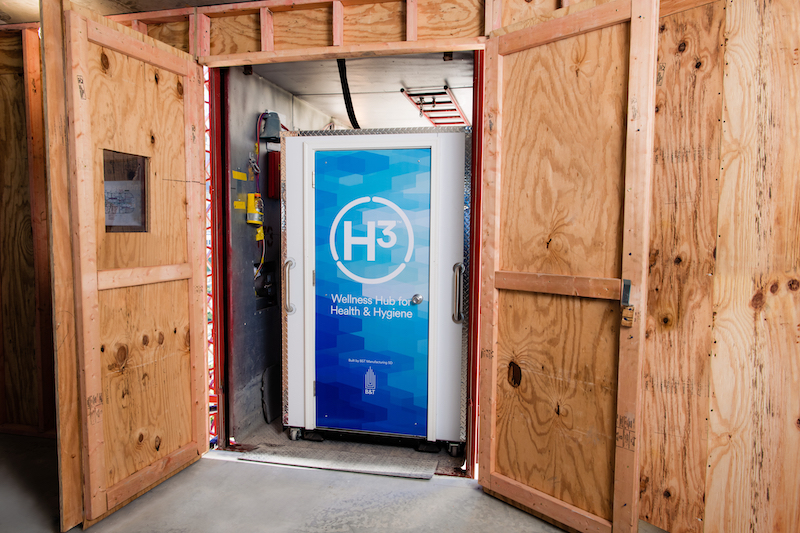In the annals of jobsite productivity, the portable restroom—better known as a porta potty or Porta John—has played a prominent, if underappreciated, role.
Dating back to the 1940s, these single-occupant restrooms within fiberglass boxes are essential fixtures in construction management. And there have been advances along the way: in 2016, for example, a New York-based supplier named Callahead introduced Waterloo, a self-contained system that Callahead touted as giving users the look, feel, and comfort of a home bathroom.
But portable restrooms can’t always be conveniently placed, especially on high-rise projects where bathroom breaks can be an arduous, time-consuming process.
BUILT TO ACCOMMODATE TIGHT SPACES
Lendlease thinks it’s found a solution to this dilemma with its H3 Wellness Hub, a modular bathroom system whose design optimizes mobility, installation, and maintenance. (The three “H”s stand for hub, health, and hygiene.)
Lendlease invented H3, and has licensed its exclusive manufacturer, B&T Manufacturing in Black Hawk, S.D., to market and sell the units that are 60-1/8 x 49 x 82 inches (length, width, height, outside) and 49 x 44-1/4 x 75 inches (inside). Lendlease started rolling out H3s last November and there are currently eight in the field and 11 more scheduled for delivery within the next month in New York, Los Angeles, San Francisco, and Chicago.
B&T is in negotiations with other Porta John suppliers and subcontractors.
The H3s are designed to accommodate tight spaces. They can fit in a construction hoist or be lifted by crane vertically onto a project’s site. Their built-in wheel system can lock in place or be rolled around for versatile positioning.
MULTIPLE HOOKUP OPTIONS
 Chemicals aren't needed to clean the interior of H3s, which can by connected to septic tanks or city utilities.
Chemicals aren't needed to clean the interior of H3s, which can by connected to septic tanks or city utilities.
The units provide an enclosed, climate-controlled space that can be connected to standalone septic tanks or directly, on single or multiple floors, to sanitation, fresh water, and electrical utility risers. Conventional cleaning materials can be used, thereby eliminating the need for chemicals that are common in most portable restrooms. (A wall-mounted toilet allows for obstruction-free floor cleaning.)
H3s include HVAC, hot water, natural lighting (via a translucent roof), and porcelain fixtures. UV options are available for germ and bacteria prevention.
Tim Torpey, B&T’s general manager, tells BD+C that his company isn’t sharing pricing information publicly, preferring instead to have customers call and request a price quote. Torpey adds that B&T is offering volume discounts.
 The units are designed to make personal hygiene more convenient for jobsite workers.
The units are designed to make personal hygiene more convenient for jobsite workers.
Related Stories
| Aug 11, 2010
Reed Construction Data files corporate espionage lawsuit against McGraw-Hill Construction Dodge
Reed Construction Data (RCD), a leading construction information provider and a wholly-owned subsidiary of Reed Elsevier (NYSE:RUK, NYSE:ENL), today filed suit in federal court against McGraw-Hill Construction Dodge, a unit of The McGraw-Hill Companies, Inc. (NYSE:MHP). The suit charges that Dodge has unlawfully accessed confidential and trade secret information from RCD since 2002 by using a series of fake companies to pose as RCD customers.
| Aug 11, 2010
Jacobs, HOK top BD+C's ranking of the 75 largest state/local government design firms
A ranking of the Top 75 State/Local Government Design Firms based on Building Design+Construction's 2009 Giants 300 survey. For more Giants 300 rankings, visit http://www.BDCnetwork.com/Giants
| Aug 11, 2010
Brad Pitt’s foundation unveils 14 duplex designs for New Orleans’ Lower 9th Ward
Gehry Partners, William McDonough + Partners, and BNIM are among 14 architecture firms commissioned by Brad Pitt's Make It Right foundation to develop duplex housing concepts specifically for rebuilding the Lower 9th Ward in New Orleans. All 14 concepts were released yesterday.
| Aug 11, 2010
NAVFAC releases guidelines for sustainable reconstruction of Navy facilities
The guidelines provide specific guidance for installation commanders, assessment teams, estimators, programmers and building designers for identifying the sustainable opportunities, synergies, strategies, features and benefits for improving installations following a disaster instead of simply repairing or replacing them as they were prior to the disaster.







